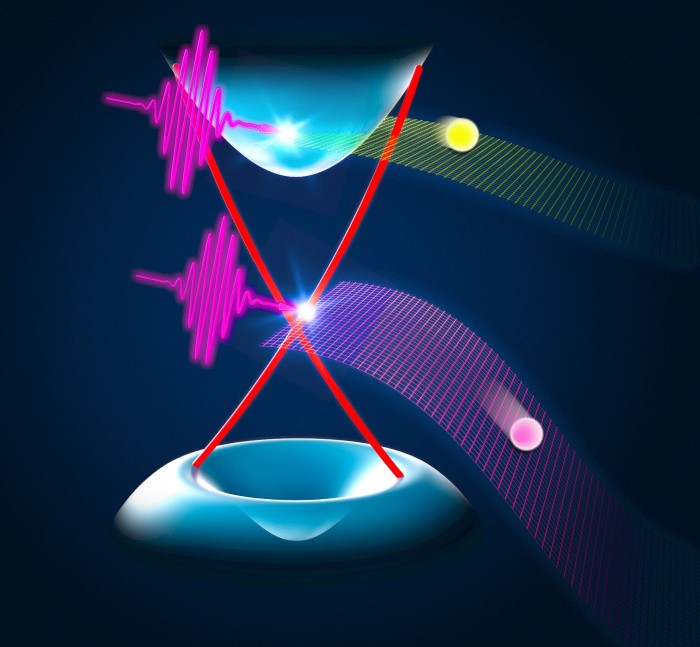A study recently published in “NPJ Quantum Materials” provides new insight into the properties of topological insulators, materials that conduct electricity in a special way and hold the promise of novel circuits and faster mobile communications. This work was carried out by a research team led by Helmholtz-Zentrum Dresden-Rossendorf (HZDR) and involved ICN2 group leader Dr Klaas-Jan Tielrooij.

Topological insulators are a class of materials that have a special quantum property: on their surface they can conduct electricity almost loss-free while their interior functions as an insulator – no current can flow there. This opens up interesting prospects: topological insulators could form the basis for high efficiency electronic components, which makes them an interesting research field for physicists.
But a number of fundamental questions are still unanswered. What happens, for example, when you give the electrons in the material a “nudge” using specific electromagnetic waves – so-called terahertz radiation – thus generating an excited state? The electrons tend to release this extra-energy as quickly as possible, such as by heating up the crystal lattice surrounding them. In the case of topological insulators, however, it was previously unclear whether getting rid of this energy happened faster in the conducting surface than in the insulating core.
Under the leadership of Dr Sergey Kovalev, from the Helmholtz-Zentrum Dresden-Rossendorf (HZDR), a research team from Germany, Spain and Russia performed a series of experiments, using a special setup, to shed light on this enigma. They found out that the electrons in the surface became de-excited significantly faster than those in the interior of the material: apparently, they were able to transfer their energy to the crystal lattice immediately. These results are very relevant since they could lead to interesting developments in digital communication like WLAN and mobile communications.
This study has just been published in NPJ Quantum Materials. Dr Klaas-Jan Tielrooij, leader of the ICN2 Ultrafast Dynamics in Nanoscale Systems Group, took part in this work.
For more information: Press release by HZDR
Reference article:
S. Kovalev, K.-J. Tielrooij, J.-C. Deinert, I. Ilyakov, N. Awari, M. Chen, A. Ponomaryov, M. Bawatna, T.V.A.G. de Oliveira, L.M. Eng, K.A. Kuznetsov, G.Kh. Kitaeva, P.I. Kuznetsov, H.A. Hafez, D. Turchinovich, M. Gensch, Terahertz signatures of ultrafast Dirac fermion relaxation at the surface of topological insulators at room temperature. NPJ Quantum Materials 6,84 (2021). DOI: 10.1038/s41535-021-00384-9.
Image:
Terahertz pulses (from left) strike a topological insulator. They excite the electrons, whose possible states are confined to energy bands. The extended bands in the bulk of the material (blue) exhibit an energy gap, which makes the material an electrical insulator. The situation is quite different at the surface: here, the bands bridge the energy gap and thereby induce metallic behavior. The experiment shows that the electrons in these surface states return to equilibrium very quickly (purple grid). In contrast, the electrons in the other bands need about ten times longer to come to rest (yellow grid). [Credit: HZDR/Juniks]

